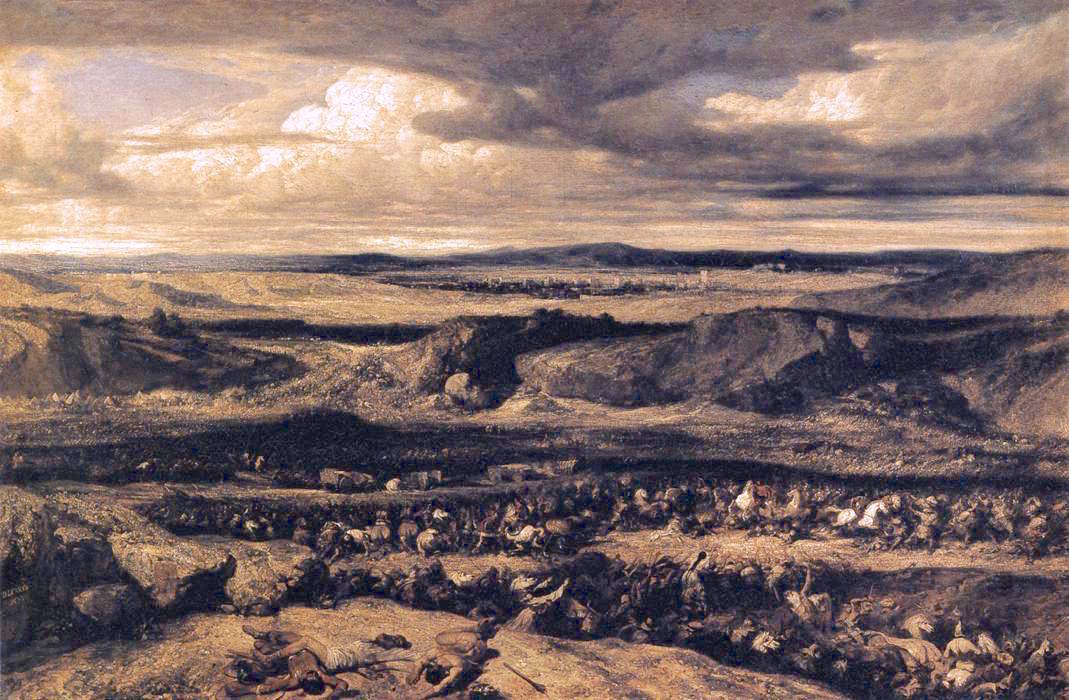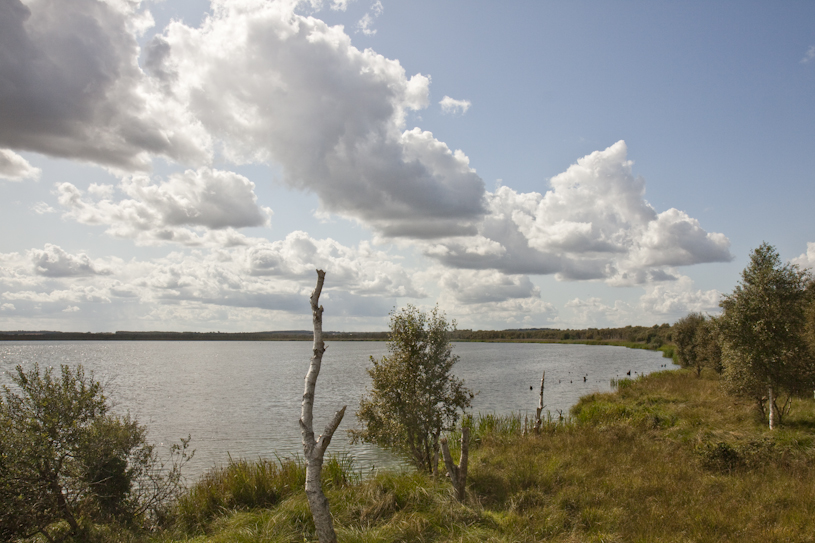|
Himmerland
Himmerland is a peninsula in northeastern Jutland, Denmark. It is delimited to the north and the west by the Limfjord, to the east by the Kattegat, and to the south by the Mariager Fjord. The largest city is Aalborg; smaller towns include Hobro, Aars, Løgstør, Støvring and Nibe. In northeastern Himmerland is the Lille Vildmose, Denmark's largest raised bog, which sustains a rich bird life of international importance. Etymology It is generally assumed that the name Himmerland is derived from the tribe of the Cimbri since, in the ''Geography'' of Ptolemy (2nd century AD), the ''Kimbroi'' (in Greek ''Κίμβροι'') are located in the northernmost part of the peninsula of Jutland, called ''Kimbrikē chersonēsos'' in Greek (Κιμβρική Χερσόνησος). The Latin ''c'' and Greek ''k'' attest an earlier stage of Germanic in which the Germanic sound shift was not yet completed (*''k'' > *''χ'' > ''h''), or it has been assumed the Latin form may be derived throug ... [...More Info...] [...Related Items...] OR: [Wikipedia] [Google] [Baidu] |
Cimbri
The Cimbri (Greek Κίμβροι, ''Kímbroi''; Latin ''Cimbri'') were an ancient tribe in Europe. Ancient authors described them variously as a Celtic people (or Gaulish), Germanic people, or even Cimmerian. Several ancient sources indicate that they lived in Jutland, which in some classical texts was called the Cimbrian peninsula. There is no direct evidence for the language they spoke, though some scholars argue that it must have been a Germanic language, while others argue that it must have been Celtic. Together with the Teutones and the Ambrones, they fought the Roman Republic between 113 and 101 BC during the Cimbrian War. The Cimbri were initially successful, particularly at the Battle of Arausio, in which a large Roman army was routed. They then raided large areas in Gaul and Hispania. In 101 BC, during an attempted invasion of the Italian peninsula, the Cimbri were decisively defeated at the Battle of Vercellae by Gaius Marius, and their king, Boiorix, was killed. ... [...More Info...] [...Related Items...] OR: [Wikipedia] [Google] [Baidu] |
Aars
Aars or Års, () is a Danish town with a population of 8,474 (1 January 2022)BY3: Population 1. January by urban areas, area and population density The Mobile Statbank from in , . Administratively, Aars is the municipal seat of Vesthimmerland Municipality and biggest town of [...More Info...] [...Related Items...] OR: [Wikipedia] [Google] [Baidu] |
Himmerland
Himmerland is a peninsula in northeastern Jutland, Denmark. It is delimited to the north and the west by the Limfjord, to the east by the Kattegat, and to the south by the Mariager Fjord. The largest city is Aalborg; smaller towns include Hobro, Aars, Løgstør, Støvring and Nibe. In northeastern Himmerland is the Lille Vildmose, Denmark's largest raised bog, which sustains a rich bird life of international importance. Etymology It is generally assumed that the name Himmerland is derived from the tribe of the Cimbri since, in the ''Geography'' of Ptolemy (2nd century AD), the ''Kimbroi'' (in Greek ''Κίμβροι'') are located in the northernmost part of the peninsula of Jutland, called ''Kimbrikē chersonēsos'' in Greek (Κιμβρική Χερσόνησος). The Latin ''c'' and Greek ''k'' attest an earlier stage of Germanic in which the Germanic sound shift was not yet completed (*''k'' > *''χ'' > ''h''), or it has been assumed the Latin form may be derived throug ... [...More Info...] [...Related Items...] OR: [Wikipedia] [Google] [Baidu] |
Johannes Vilhelm Jensen
Johannes Vilhelm Jensen (20 January 1873 – 25 November 1950) was a Danish author, known as one of the great Danish writers of the first half of 20th century. He was awarded the Nobel Prize in Literature in 1944 "for the rare strength and fertility of his poetic imagination with which is combined an intellectual curiosity of wide scope and a bold, freshly creative style". One of his sisters, Thit Jensen, was also a well-known writer and a very vocal, and occasionally controversial, early feminist. Early years He was born in Farsø, a village in North Jutland, Denmark, as the son of a veterinary surgeon and he grew up in a rural environment. While studying medicine at the University of Copenhagen he worked as a writer to fund his studies. After three years of studying he chose to change careers and devote himself fully to literature. Literary works The first phase of his work as an author was influenced by '' fin-de-siècle'' pessimism. His career began with the publication ... [...More Info...] [...Related Items...] OR: [Wikipedia] [Google] [Baidu] |
Aalborg
Aalborg (, , ) is Denmark's List of cities in Denmark by population, fourth largest town (behind Copenhagen, Aarhus, and Odense) with a population of 119,862 (1 July 2022) in the town proper and an Urban area, urban population of 143,598 (1 July 2022). As of 1 July 2022, the Municipality of Aalborg had a population of 221,082, making it the third most populous in the country after the municipalities of Copenhagen Municipality, Copenhagen and Aarhus Municipality, Aarhus. Eurostat and OECD have used a definition for the Metropolitan area of Aalborg (referred to as a ''Functional urban area''), which includes all municipalities in the Province (Danish: Provinces of Denmark, ''landsdel'') of North Jutland (Danish: ''Nordjylland''), with a total population of 594,323 as of 1 July 2022. By road Aalborg is southwest of Frederikshavn, and north of Aarhus. The distance to Copenhagen is if travelling by road and not using ferries. The earliest settlements date to around AD 700. Aa ... [...More Info...] [...Related Items...] OR: [Wikipedia] [Google] [Baidu] |
Lille Vildmose
Lille Vildmose (meaning: “little wild bog”) is a raised bog also known as the East Himmerland Moor in the hinterland in the municipalities of Aalborg and Mariagerfjord, Denmark. It is the largest remaining raised bog in Northwestern Europe. The bog is a remnant of heathland that once extended south from Limfjorden to Rold Forest. Geography Lille Vildmose is a protected area, about southeast of Aalborg. It encompasses an area of which is owned both privately and partly by the State. A well-preserved, pristine wilderness, it contains the largest remaining raised bog in Northwestern Europe. Its habitat consists of raised bogs (once part of the seabed), former islands (during the Stone Age), and a large area of coastal hills and beach meadows. The raised bogs flourished undisturbed for 1,200 years till they were intentionally drained around 1750. They contain layers of peat growing at an annual rate of and reaching a depth of . Rainwater provides the nutrients. Tofte Lake ('' ... [...More Info...] [...Related Items...] OR: [Wikipedia] [Google] [Baidu] |
Gundestrup Cauldron
The Gundestrup cauldron is a richly decorated silver vessel, thought to date from between 200 BC and 300 AD,Nielsen, S; Andersen, J; Baker, J; Christensen, C; Glastrup, J; et al. (2005). "The Gundestrup cauldron: New scientific and technical investigations”, ''Acta Archaeologica, 76'': 1–58. Jouttijärvi, Arne (2009), "The Gundestrup Cauldron: Metallurgy and Manufacturing Techniques”, ''Materials and Manufacturing Processes, 24'': 960–966. or more narrowly between 150 BC and 1 BC. This places it within the late La Tène period or early Roman Iron Age. The cauldron is the largest known example of European Iron Age silver work (diameter: ; height: ). It was found dismantled, with the other pieces stacked inside the base, in 1891, in a peat bog near the hamlet of Gundestrup in the Aars parish of Himmerland, Denmark ().Bergquist, A K & Taylor, T F (1987), "The origin of the Gundestrup cauldron", ''Antiquity 61'': 10–24.Taylor, Timothy (1992), "The Gundestrup cauldr ... [...More Info...] [...Related Items...] OR: [Wikipedia] [Google] [Baidu] |
Mariager Fjord
With a length of approximately 35 km (22 statute miles), Mariager Fjord is the longest fjord in Jutland, and the 2nd longest fjord (Tied with Ise Fjord on Zealand), behind Roskilde Fjord in Denmark (Excluding the self-governing territory of Greenland). Mariager Fjord cuts into the Jutland peninsula from the ''Kattegat'' sea and ends at the town of Hobro; other important towns along the fjord are Hadsund and Mariager from which the fjord takes its name. Mariager fjord makes up most of the southern limit of the traditional region of Himmerland. In Danish language, any type of inlet in Denmark is called a fjord, even lagoons. Geologically, Mariager Fjord isn't a true fjord, but an inlet of the förde type. The width of Mariager Fjord varies from 4½ km to 250 metres (2,8-0,16 miles) and its area is about 47 km2s (18 square miles). The depth is up to 30 metres (ca. 100 ft). As a result of the 2007 Municipal Reform, the new Mariagerfjord municipality was created around Mariager ... [...More Info...] [...Related Items...] OR: [Wikipedia] [Google] [Baidu] |
Støvring
Støvring is a town in Rebild municipality in Region Nordjylland in the geographic region of the Jutland peninsula known as ''Himmerland'' in northern Denmark. The town has a population of 9,089 (2022), and is one of the centres of industry and retailing in the area. It is the municipal seat of Rebild municipality. Støvring is the 8th biggest town/city in Region Nordjylland. Støvring is served by Støvring railway station, located on the Randers–Aalborg railway line. It is located 21 km from Aalborg and 37 km from Aars History In 1682 the village consisted of 12 farms and 8 houses without land. The total cultivated area amounted to 437.1 barrels of land due to 58.40 barrels of grains. The cultivation form was grassland with foxes. In 1875 the city was described as follows: "Støvring with School, Watermill, Inn, 2 smaller shopping establishments and railway station. The original Støvring station closed in 1974, but the station reopened in 2003 as a part of the new Aalborg Com ... [...More Info...] [...Related Items...] OR: [Wikipedia] [Google] [Baidu] |
Nibe
Nibe is a town with a population of 5,433 (1 January 2022),BY3: Population 1. January by rural and urban areas, area and population density The Mobile Statbank from located in Region North Jutland on the in northern . The town is located in a geographic region known a ... [...More Info...] [...Related Items...] OR: [Wikipedia] [Google] [Baidu] |
Jutland
Jutland ( da, Jylland ; german: Jütland ; ang, Ēota land ), known anciently as the Cimbric or Cimbrian Peninsula ( la, Cimbricus Chersonesus; da, den Kimbriske Halvø, links=no or ; german: Kimbrische Halbinsel, links=no), is a peninsula of Northern Europe that forms the continental portion of Denmark and part of northern Germany. The names are derived from the Jutes and the Cimbri, respectively. As with the rest of Denmark, Jutland's terrain is flat, with a slightly elevated ridge down the central parts and relatively hilly terrains in the east. West Jutland is characterised by open lands, heaths, plains, and peat bogs, while East Jutland is more fertile with lakes and lush forests. Southwest Jutland is characterised by the Wadden Sea, a large unique international coastal region stretching through Denmark, Germany, and the Netherlands. Geography Jutland is a peninsula bounded by the North Sea to the west, the Skagerrak to the north, the Kattegat and Baltic Se ... [...More Info...] [...Related Items...] OR: [Wikipedia] [Google] [Baidu] |
Grimm's Law
Grimm's law (also known as the First Germanic Sound Shift) is a set of sound laws describing the Proto-Indo-European (PIE) stop consonants as they developed in Proto-Germanic in the 1st millennium BC. First systematically put forward by Jacob Grimm but previously remarked upon by Rasmus Rask, it establishes a set of regular correspondences between early Germanic stops and fricatives and stop consonants of certain other centum Indo-European languages. History Grimm's law was the first discovery of a systematic sound change, and it led to the creation of historical phonology as a separate discipline of historical linguistics. The correspondence between Latin ''p'' and Germanic ''f'' was first noted by Friedrich von Schlegel in 1806. In 1818, Rasmus Rask extended the correspondences to other Indo-European languages such as Sanskrit and Greek, and to the full range of consonants involved. In 1822, Jacob Grimm put forth the rule in his book ''Deutsche Grammatik'' and extended it t ... [...More Info...] [...Related Items...] OR: [Wikipedia] [Google] [Baidu] |
.jpg)






